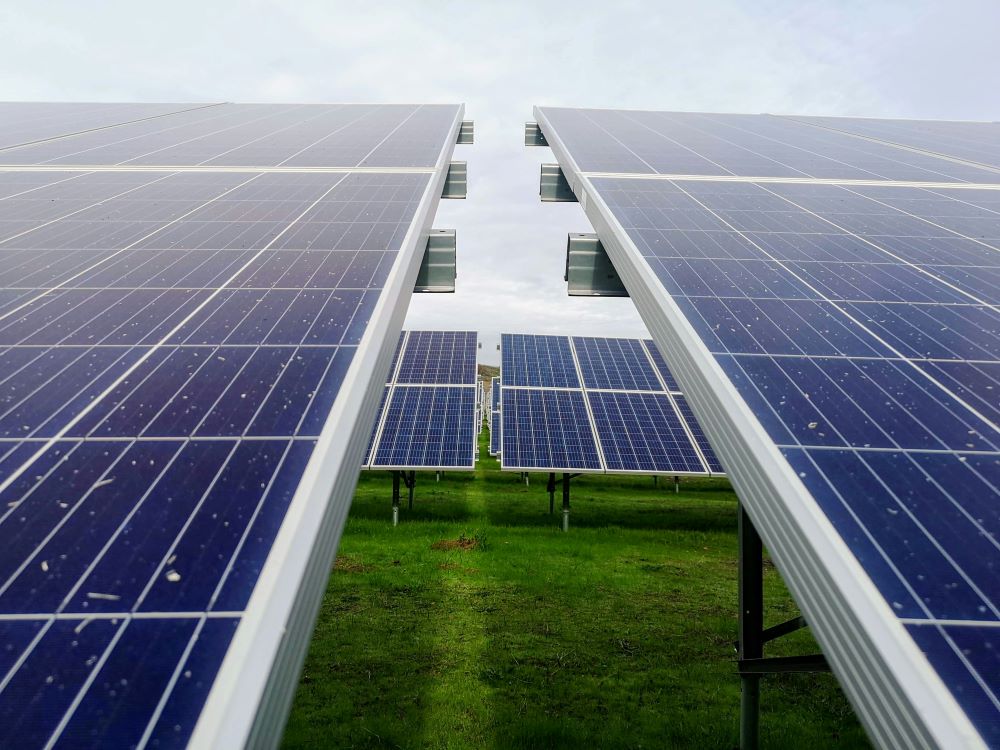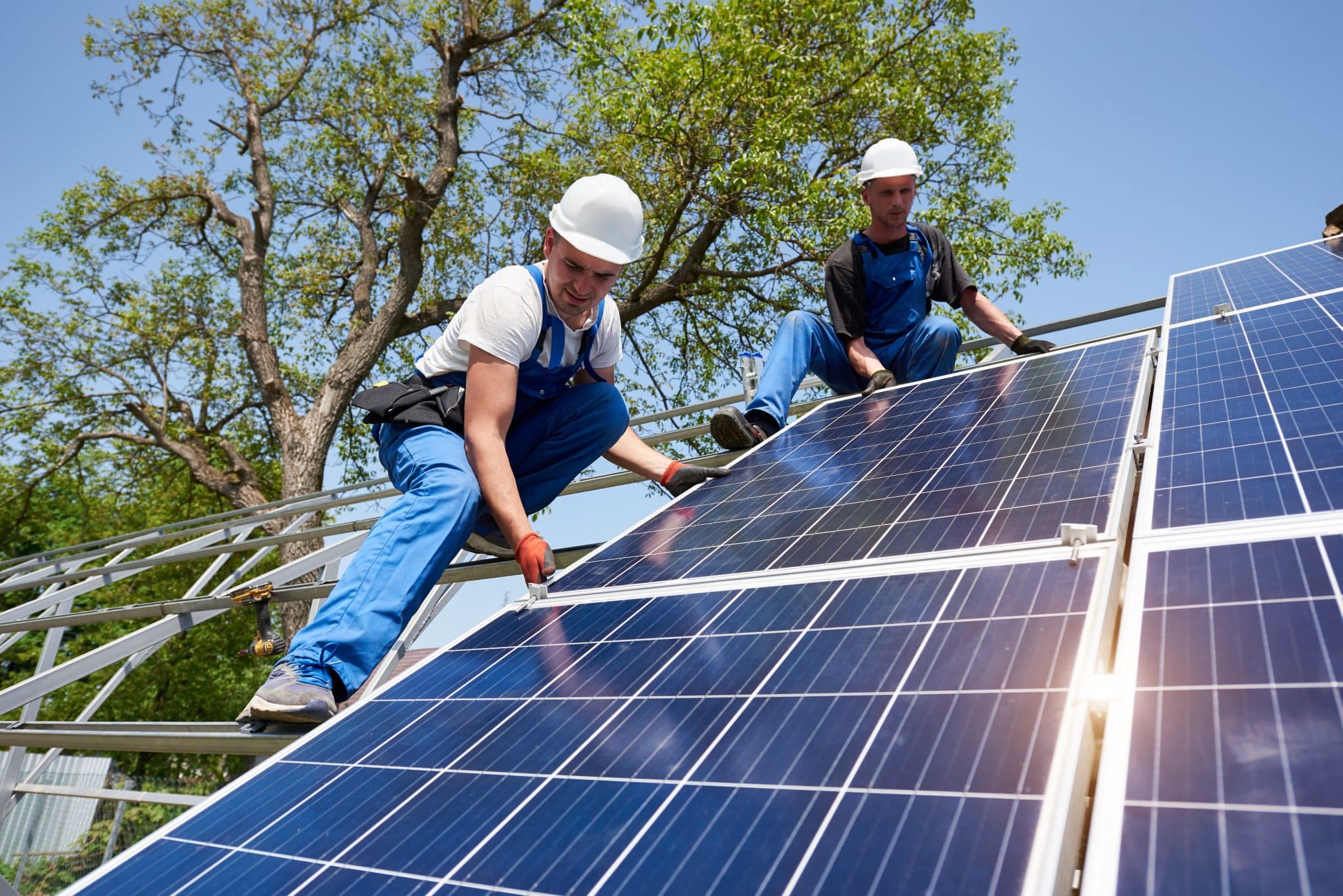Switching to solar energy for your home is a smart choice, both for the environment and your wallet. But with so many different types of solar panels available, it can be confusing to know which one is right for you. Each type of panel offers unique benefits depending on your specific needs, such as budget, space, and energy goals. In this article, we’ll explore the main types of solar panels used for homes, from monocrystalline and polycrystalline to thin-film options. By the end, you’ll have a clearer understanding of which panel type might be the best fit for your home, helping you make an informed decision and maximize your solar investment.
What Are The Primary Types of Solar Panels?
Choosing the right solar panels for your home can feel overwhelming with so many options out there. Don’t worry; we’re here to help simplify it for you. There are a few main types of solar panels you’ll come across, each with its own set of pros and cons. The best one for you will depend on your home’s specific needs, like how much sun your roof gets, your budget, and how much energy you hope to generate.
Monocrystalline Solar Panels
These are the panels you often see on homes with a sleek, black appearance. Made from a single crystal of silicon, they’re known for being super efficient. If you’re tight on space or just want the most power from every square inch, monocrystalline panels are a solid bet. They work well in both hot and cold weather, which is great if you live somewhere with a lot of weather changes.
Polycrystalline Solar Panels
If you’re looking for a more budget-friendly option, polycrystalline panels might be the way to go. These are made from multiple silicon crystals, which makes them a bit less efficient than monocrystalline panels, but they still get the job done well. They have a blue tint and are perfect if you’ve got plenty of roof space and are looking to save some money without compromising too much on performance.
Passivated Emitter And Rear Cell (PERC) Panels
PERC panels take the standard monocrystalline panels and add a bit of extra tech magic to them. They’re designed to capture more sunlight, even in less-than-ideal conditions, which makes them a great choice if your home doesn’t get direct sunlight all day long. PERC panels are like the overachievers of the solar world—efficient and effective in most situations.
Thin-Film Solar Panels
If you have a unique setup or a roof that can’t handle heavy panels, thin-film solar panels might be what you need. They’re light, flexible, and can fit on unusual surfaces. While they’re not as efficient as the crystalline types, they do better in low light and hot weather. The most common types include cadmium telluride (CdTe), amorphous silicon (a-Si), and copper indium gallium selenide (CIGS).
- Cadmium Telluride (CdTe): These are cost-effective and handle heat well but don’t match the efficiency of crystalline panels.
- Amorphous Silicon (a-Si): These are super light and flexible, ideal for small gadgets, but not very efficient for home use.
- Copper Indium Gallium Selenide (CIGS): CIGS panels offer better efficiency among thin-film options and are also versatile for different kinds of installations.
So, which type is best for you? It really depends on what you’re looking for. Think about your roof space, your budget, and how much sunlight you get. Knowing a bit about the efficiency ratings and temperature coefficients can also help you make the right call.

How Efficient Are Different Types of Solar Panels?
The efficiency of solar panels shows how well they turn sunlight into electricity. Different types of solar panels have different efficiency levels, which affect how much power they produce and your energy savings.
Monocrystalline Solar Panels
Monocrystalline panels are made from a single crystal of silicon, making them the most efficient type. They’re ideal if you have limited roof space but want maximum power. Their high-efficiency solar panel rating makes them the best type of solar panel for many homes.
Polycrystalline Solar Panels
Polycrystalline panels are made from multiple silicon crystals, giving them a slightly lower efficiency rating than monocrystalline panels. They’re a more affordable option and work well on larger roofs, even if they need more panels to produce the same amount of power.
PERC (Passivated Emitter and Rear Cell) Panels
PERC panels are an improved version of monocrystalline panels with added layers to capture more sunlight. They’re great for low-light conditions and provide a good balance between cost and efficiency.
Thin-Film Solar Panels
Thin-film solar panels are lightweight and flexible but have lower efficiency. They can be ideal for unique installations, like curved surfaces or hot climates, where traditional panels might not fit.
Factors Affecting Solar Panel Efficiency
Efficiency is affected by:
- Manufacturing Processes: Different methods, like single-crystal silicon, can impact efficiency.
- Temperature Coefficients: Panels perform differently in various temperatures; lower coefficients handle heat better.
- Solar Technology: Innovations like PERC and thin film solar cells offer varied efficiency levels.
Consider efficiency, roof size, budget, and climate to choose the best type of solar panel for your home. For more tips on optimizing your system, check out our guide on how to increase solar panel efficiency.
Solar Panel Types by Cost
The cost of solar panels can vary depending on the type you choose. Understanding the costs of the different types of solar panels can help you find the best option for your budget and energy needs.
- Monocrystalline Solar Panels: Monocrystalline panels are typically the most expensive because they offer the highest efficiency. Made from a single crystal of silicon, they produce the most electricity per square foot. These panels are ideal if you have limited roof space but want maximum power output. They are often considered the best type of solar panel for home use due to their high efficiency.
- Polycrystalline Solar Panels: Polycrystalline panels are generally more affordable than monocrystalline panels. They are made from multiple silicon crystals, which reduces their cost but also slightly lowers their efficiency. If you have a larger roof or don’t need the highest efficiency, these panels can be a cost-effective choice for your solar panel installation.
- Passivated Emitter And Rear Cell (PERC) Panels: PERC panels are an enhanced version of monocrystalline panels, designed with an extra layer that captures more sunlight. They offer better efficiency than standard monocrystalline panels and are slightly more expensive. PERC panels provide a good balance between cost and efficiency, especially in areas with less direct sunlight.
- Thin-Film Solar Panels: Thin-film solar panels are usually the least expensive type. They are lightweight and flexible, making them suitable for unique installations like curved surfaces or roofs that can’t support heavy panels. While they have a lower efficiency rating compared to crystalline panels, they can be a great choice if you are on a tight budget or need a panel for specific applications.
When deciding which type of solar panel is best for home use, consider both the upfront cost and the long-term benefits. Monocrystalline panels offer the highest efficiency but come at a higher price. Polycrystalline panels provide a good balance between cost and performance, while thin-film panels are affordable and versatile but less efficient. Think about your budget, roof size, and energy goals to select the best option for your home.
What Are Solar Panels Made Out Of?
Solar panels are primarily made from silicon, which is excellent at absorbing sunlight and converting it into electricity. The silicon cells are protected by a tempered glass layer that shields them from weather and captures more sunlight. To keep this glass clean and maximize sunlight absorption, solar panel cleaning is important. A metal frame, usually aluminum, holds the panel together, and wiring connects the cells to an inverter, converting direct current (DC) to alternating current (AC) for home use
Some panels, like thin-film solar cells, use materials like cadmium telluride or copper indium gallium selenide. These materials make the panels lighter and more flexible, ideal for unique installations like curved surfaces or windows. Some panels also have extra coatings, like those on PERC panels, which improve efficiency by reflecting more sunlight back into the cells.
Each part of a solar panel is designed to enhance energy production, ensure durability, and suit different needs, helping you choose the best option for your home. If you’re unsure which option is right for you, don’t hesitate to contact us for personalized recommendations.
What Do Different Solar Panel Types Look Like?
- Monocrystalline solar panels have a uniform black color and a sleek, smooth appearance, making them the most attractive option for many homeowners. Their dark look helps them blend in well with modern rooftops.
- Polycrystalline panels have a bluish tint and a slightly speckled, shiny surface due to their multiple silicon crystals. They tend to look more textured compared to monocrystalline panels.
- Thin-film solar panels are typically thinner and lighter than other types, with a flexible form that sets them apart from the rigid, flat shape of traditional panels. They might appear dark blue or black, depending on the materials used, and are often used in unique installations like curved surfaces.

What Type of Panel Is Best for Your Installation?
The best type of solar panel for your home depends on your specific needs.
- If you have limited roof space and want the highest efficiency, monocrystalline panels are a great choice because they produce more power in a smaller area.
- If you have a larger roof and are looking for a balance between cost and performance, polycrystalline panels could be a good fit. They offer decent efficiency at a lower price.
- For unique roof shapes, lighter structures, or specific applications, thin-film solar cells might be the best option due to their flexibility and lower cost.
When choosing which type of solar panel is best for home use, think about your budget, the size and shape of your roof, and how much sunlight your location gets. A good solar panel installation will take all these factors into account to find the perfect match for your home.
Other Factors to Consider When Comparing Panel Types
When choosing the right solar panels for your home, it’s important to look beyond just the price and efficiency. It’s also worth considering how long solar panels last and how different types handle various environmental conditions. Here are some other factors to consider:
- Hail Rating: The hail rating shows how well a solar panel can withstand hailstorms. Panels with a high hail rating are built to resist damage from hailstones, which is crucial if you live in an area prone to hail.
- Hurricane Rating: The hurricane rating indicates a panel’s ability to handle strong winds and flying debris. If you live in a region with frequent hurricanes, choose panels with a high hurricane rating to ensure they stay secure and undamaged.
- Temperature: Not all solar panels perform the same in different temperatures. Look for panels with a good temperature coefficient, meaning they maintain high performance even on very hot days. This helps ensure you get the most out of your solar panel’s efficiency year-round.
- Fire Rating: The fire rating tells you how resistant a solar panel is to fire. Panels with the highest fire rating (Class A) offer the best protection and are especially important for homes in areas with a high risk of wildfires.
Considering these factors, along with the efficiency of the solar panel, will help you choose the best panels for your home and ensure they last for years to come.
Conclusion
Choosing the right solar panel for your home involves considering several factors, from cost and efficiency to the specific needs of your location, like weather conditions and roof size. Monocrystalline panels offer the highest efficiency and are ideal for small spaces, while polycrystalline panels provide a more budget-friendly option. Thin-film solar cells work well for unique installations or lightweight needs, even if they are less efficient.
By weighing these options and considering other factors like hail, hurricanes, temperatures, and fire ratings, you can select the best solar panels to maximize your energy savings and long-term investment.

